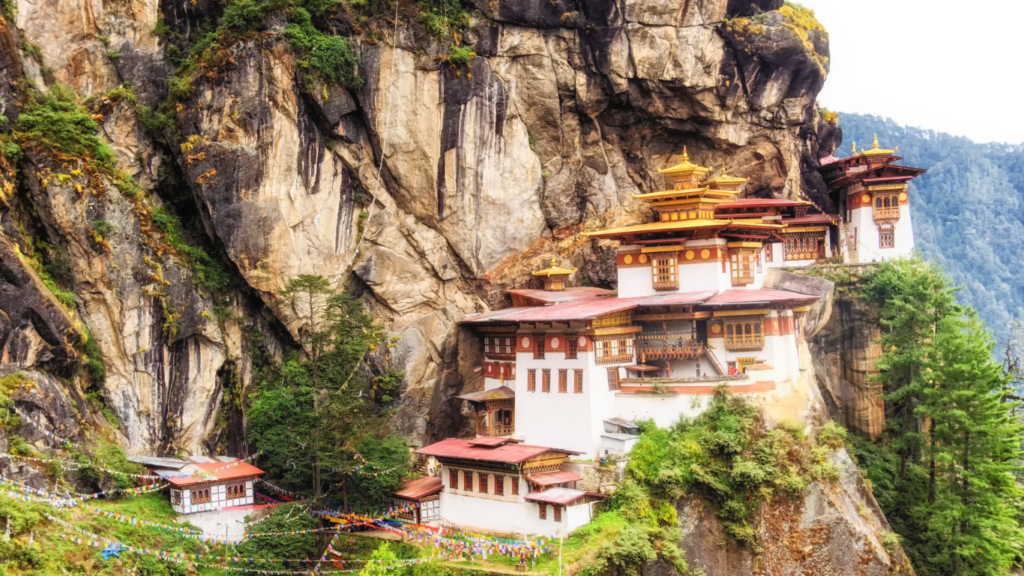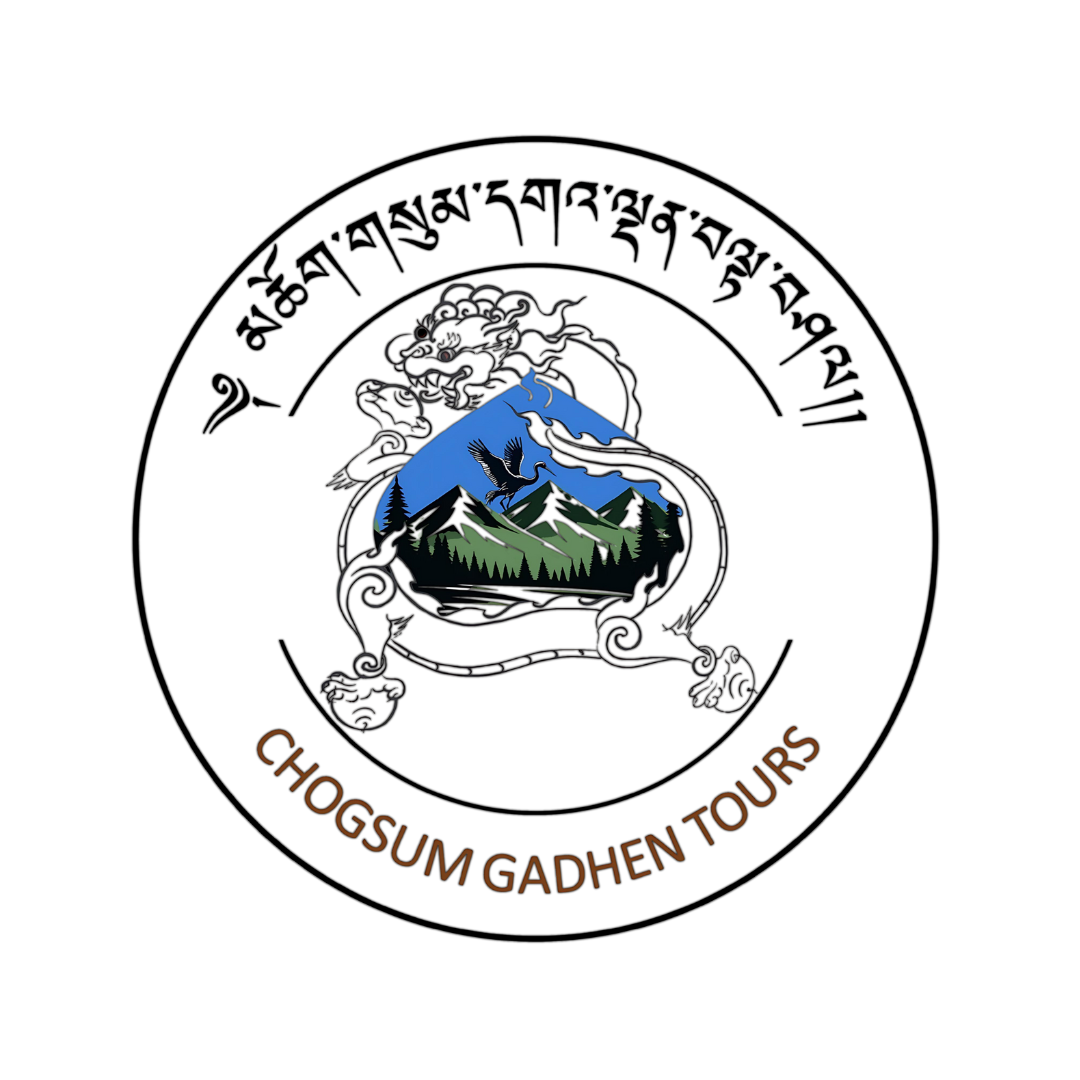Call Us:+975-17615031
Places to visit Paro
Paro Taktsang (Tiger’s Nest Monastery): A Journey to the Spiritual Heights
Perched dramatically on the edge of a sheer cliff, 900 meters above the Paro Valley, lies the iconic Paro Taktsang, commonly known as Tiger’s Nest Monastery. This sacred site is not only a masterpiece of Bhutanese architecture but also a profound symbol of the country’s spiritual heritage.
A Spiritual Ascent
The journey to Paro Taktsang is both a physical and spiritual pilgrimage. The trail begins at the base of the mountain, meandering through lush pine forests adorned with vibrant prayer flags that flutter in the wind. As you ascend, the air becomes crisp, and the panoramic views of the Paro Valley unfold beneath you, creating a sense of awe and reverence.
Legend has it that in the 8th century, Guru Rinpoche, the second Buddha, flew to this site on the back of a tigress to subdue a local demon and meditate in the caves. This extraordinary event gave the monastery its name and established its spiritual significance. Pilgrims and visitors alike are drawn to this sacred site to retrace Guru Rinpoche’s steps and seek blessings.
Architectural Marvel
Built in 1692, the monastery is a marvel of Bhutanese architecture. Its whitewashed walls and golden roofs seem to emerge organically from the rocky cliffs, blending seamlessly with the natural landscape. The complex consists of four main temples and several smaller structures, all interconnected by narrow stone paths and stairways carved into the rock.
Inside, the monastery houses numerous sacred relics and beautiful statues, including those of Guru Rinpoche. The main prayer hall, adorned with intricate murals and frescoes, is a place where monks and visitors meditate and offer prayers. The tranquil atmosphere, punctuated by the sound of chanting and the scent of incense, enhances the spiritual experience.
A Rewarding Experience
Reaching the monastery is a challenging yet rewarding experience. The final approach involves navigating steep stairways and crossing a narrow bridge that spans a deep chasm. As you step into the monastery, a profound sense of peace and accomplishment envelops you. The breathtaking views of the surrounding mountains and valleys from this vantage point are unparalleled, making the journey truly worthwhile.
Rinpung Dzong: The Fortress of the Heap of Jewels
Standing majestically on a hill overlooking the Paro Valley, Rinpung Dzong is one of Bhutan’s most stunning examples of fortress architecture. Known as the “Fortress of the Heap of Jewels,” this dzong has been a pivotal site for both religious and administrative purposes since its construction in the 17th century.
Historical Significance
Rinpung Dzong was built in 1646 by Zhabdrung Ngawang Namgyal, the unifier of Bhutan, to defend the valley against invasions. Throughout its history, the dzong has played a crucial role in the country’s political and religious life, serving as the administrative center of Paro and housing the monastic community.
The dzong also holds a significant place in Bhutanese history as the site of numerous important events, including the annual Paro Tshechu festival. This vibrant celebration features mask dances, traditional music, and rituals that draw thousands of locals and tourists. The festival is a vivid expression of Bhutanese culture and spirituality, reflecting the deep-rooted traditions of the region.
Architectural Grandeur
Rinpung Dzong is renowned for its stunning architecture, characterized by massive stone walls, intricate woodwork, and richly decorated interior spaces. The central tower, or utse, rises prominently from the complex, symbolizing the dzong’s strength and resilience. The fortress is strategically designed to blend with the natural landscape, offering both beauty and functionality.
Inside, visitors can explore the dzong’s numerous courtyards, temples, and assembly halls. The main hall is adorned with exquisite murals depicting scenes from Buddhist mythology and the life of Guru Rinpoche. These artworks are a testament to the artistic and spiritual heritage of Bhutan.
A Panoramic Vantage Point
The location of Rinpung Dzong provides breathtaking views of the Paro Valley and the surrounding mountains. From its vantage point, one can see the patchwork of rice fields, traditional Bhutanese houses, and the Paro River winding its way through the valley. This scenic beauty, combined with the dzong’s historical and cultural significance, makes it a must-visit destination for travelers to Bhutan.
Kyichu Lhakhang: The Timeless Temple of Paro
Nestled in the tranquil outskirts of Paro, Kyichu Lhakhang is one of Bhutan’s oldest and most sacred temples. This ancient sanctuary is a cornerstone of Bhutanese spirituality and a living testament to the country’s rich religious history.
Ancient Origins
Kyichu Lhakhang was built in the 7th century by the Tibetan King Songtsen Gampo as part of his effort to build 108 temples across the Himalayas to pin down a demoness and spread Buddhism. The temple, believed to have been constructed in a single day, is one of the two temples built in Bhutan, the other being Jampel Lhakhang in Bumthang.
According to legend, the temple marks the left foot of the demoness, anchoring her to the earth and allowing Buddhism to take root in Bhutan. Over the centuries, Kyichu Lhakhang has undergone several renovations, yet it retains its ancient charm and spiritual essence.
Architectural and Spiritual Treasures
Kyichu Lhakhang consists of two main temples. The original structure, known as Jowo Lhakhang, houses a majestic statue of Jowo Sakyamuni, one of the oldest and most revered statues of Buddha. The second temple was added in the 1960s by the Queen Mother, Ashi Kesang Choden, and complements the original with its architectural harmony and additional sacred relics.
The inner sanctum of the temple is adorned with intricate murals and carvings that depict various deities and scenes from Buddhist lore. The courtyard is filled with vibrant prayer wheels, which visitors can spin to accumulate merit and blessings.
A Place of Pilgrimage and Prayer
Kyichu Lhakhang is a vital pilgrimage site for Bhutanese Buddhists. Devotees visit the temple to offer prayers, light butter lamps, and make offerings. The serene atmosphere and the temple’s spiritual significance create a profound sense of peace and devotion.
One of the most cherished rituals at Kyichu Lhakhang is the annual prayer ceremony, where monks and laypeople gather to recite sacred texts and perform rituals for world peace and prosperity. This event is a vivid reminder of the temple’s enduring role in the spiritual life of Bhutan.
A Symbol of Bhutan’s Spiritual Heritage
Kyichu Lhakhang stands as a timeless symbol of Bhutan’s deep-rooted Buddhist traditions. Its ancient walls and sacred relics tell the story of a nation’s unwavering faith and devotion. For visitors, the temple offers a unique glimpse into Bhutan’s spiritual heart, providing an experience that is both humbling and inspiring.
Whether exploring its sacred halls, participating in a prayer ceremony, or simply soaking in the tranquil ambiance, a visit to Kyichu Lhakhang is a journey into the soul of Bhutanese spirituality.



